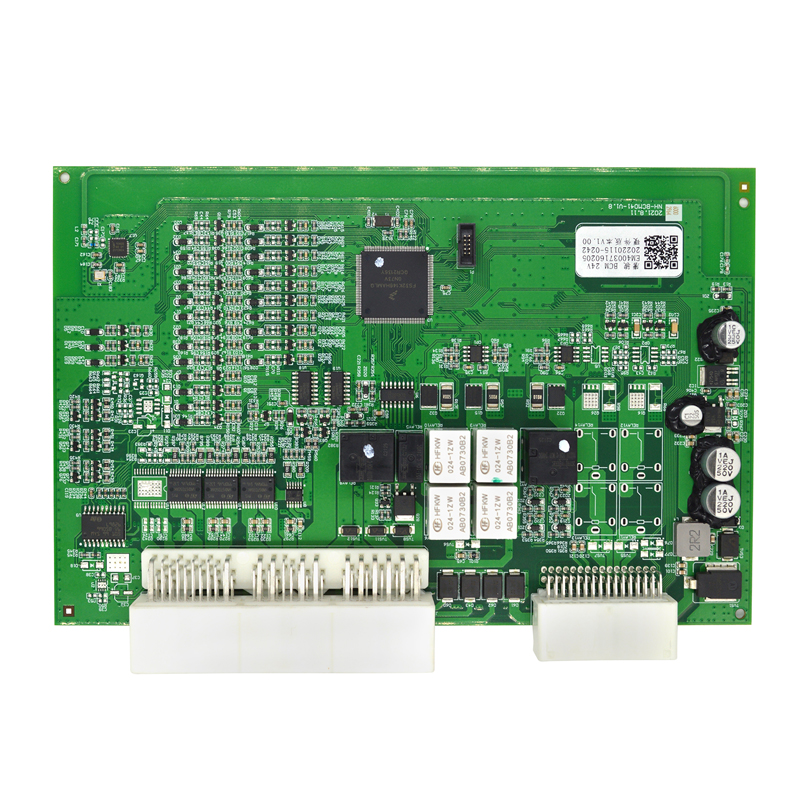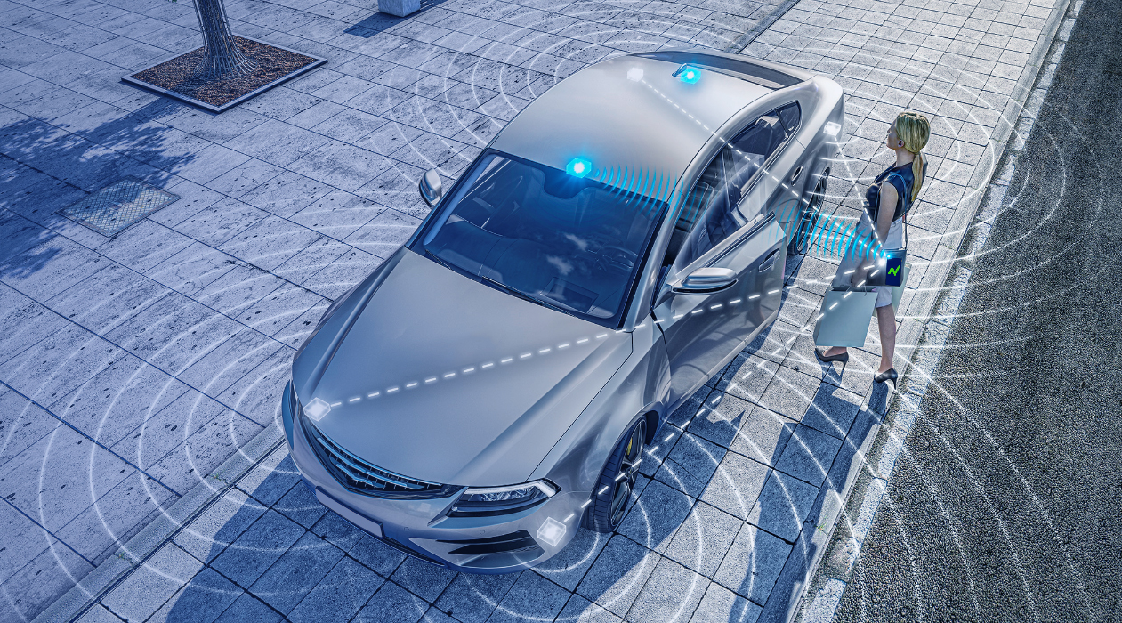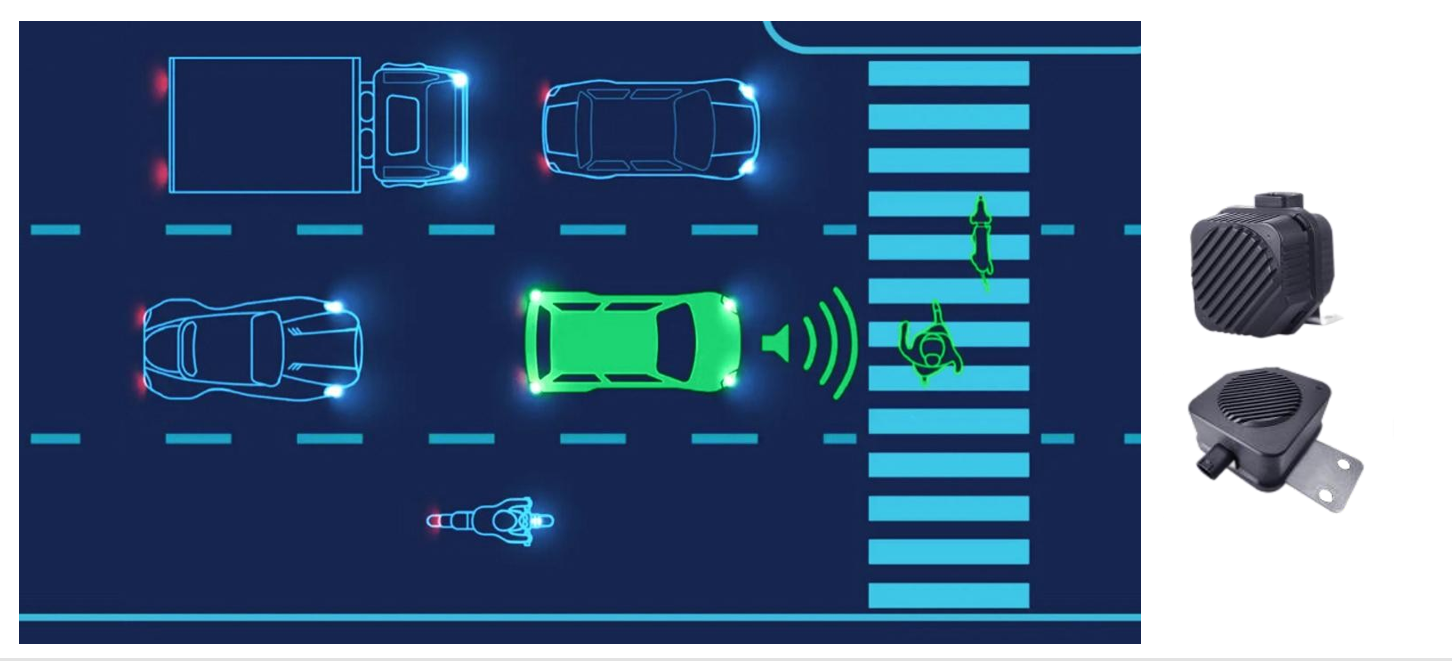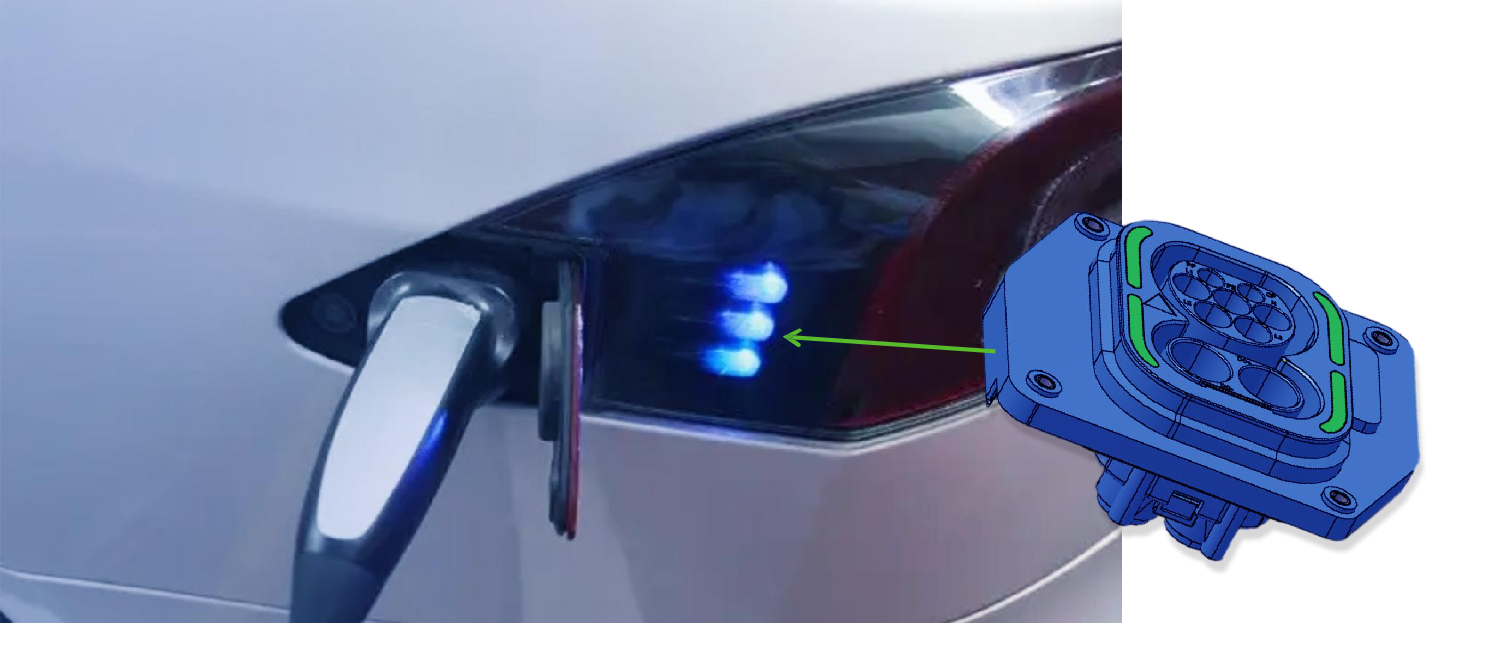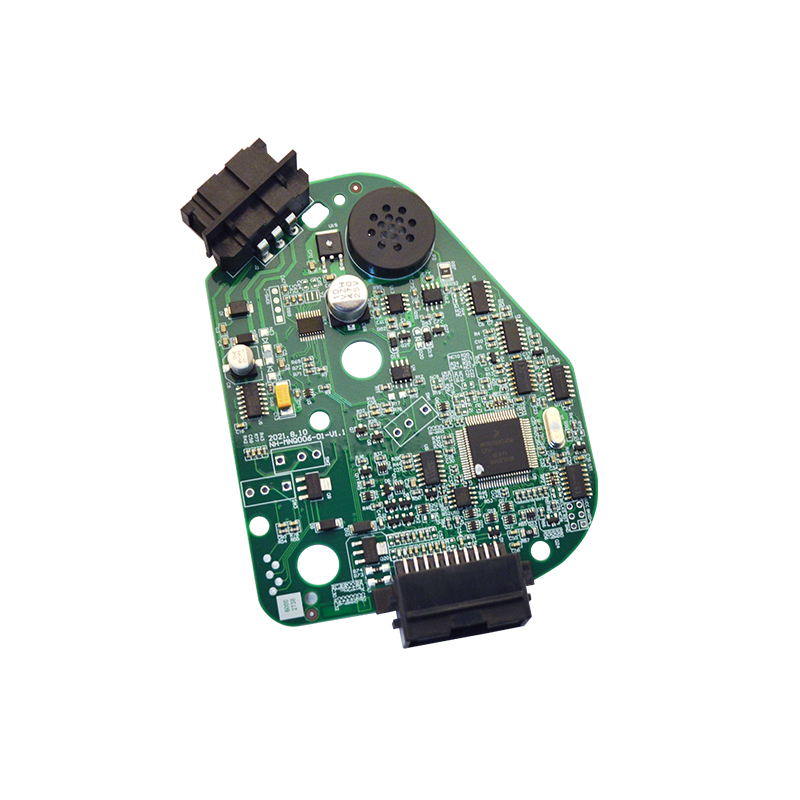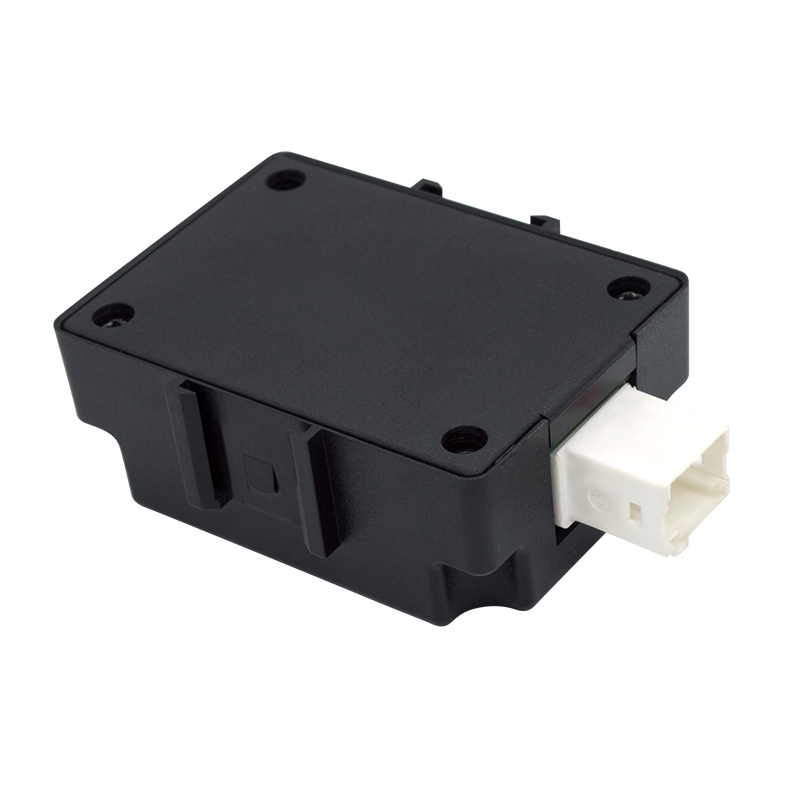Who We Are
Auto Electronics Knowledge: EV’s Charging
1. Battery packs for new energy vehicles
1. Composition of electric vehicle battery pack
The battery pack of an electric vehicle is mainly composed of battery cells and modules. A battery cell refers to a single independent lithium battery. Multiple battery cells are combined together to form a module. Multiple modules are then combined to form a battery pack.
However, there is a special case here, and that is BYD's blade battery. Due to the special design, the battery cells can be stacked vertically to directly skip the module to form a battery pack.
2. Why do batteries need to be connected in series?
They are connected in series to increase the voltage.
Because the essence of a chemical battery is to release electrical energy through chemical reactions, and the intensity of the chemical reaction determines the discharge voltage of the battery. Generally, the voltage released by the chemical reaction inside a lithium battery is about 3.7 volts. Even if you make a single lithium battery as big as a swimming pool, the essence of the chemical reaction has not changed, so the voltage is still 3.7 volts, but the number of reaction media is greater and the reaction continues. Over time, the result is that the battery capacity increases.
The voltage of 3.7 volts is obviously unable to drive the car motor to operate normally, so multiple batteries need to be connected in series to increase the voltage to meet the needs of the motor. This also just explains why the new energy vehicle battery pack cannot be made into a whole large battery, because if it is made into a whole battery, the capacity is more than enough, but the voltage is not enough.
3. Why do batteries need to be connected in parallel?
Batteries are connected in parallel to increase capacity.
Because the single capacity of current lithium batteries is not very large, if they are only connected in series, although the voltage is sufficient, the capacity is very small, and the car cannot run far at all. When connected in parallel, the battery capacity is doubled. For example, two 12-volt, 100-amp-hour batteries connected in parallel will produce 12-volt, 200-amp-hour batteries, doubling the capacity.
Example:
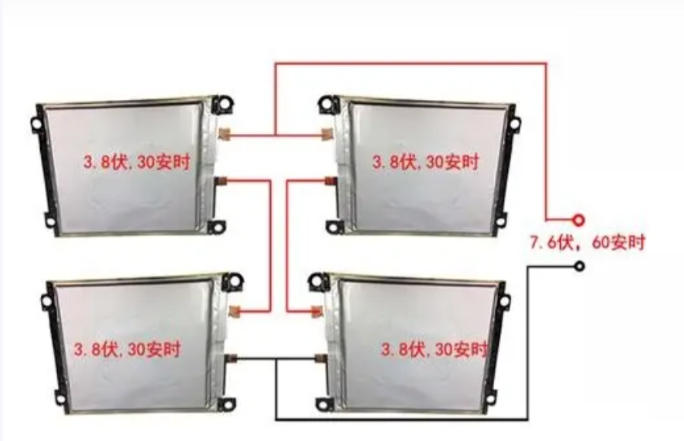
First, the manufacturer uses four 3.8-volt, 30Ah soft-pack lithium battery cells to form a module. Two pairs are connected in series and then in parallel to obtain a 7.6-volt, 60-amp-hour battery module, also known as a battery pack.
Then 48 modules are connected in series to get a 360-volt, 60-amp-hour battery pack. The battery pack is discharged with a current of 1 A and can last for 60 hours. According to the formula P=U·I, the power of the battery pack can be calculated to be 0.36 kilowatts. In other words, the battery pack can continuously discharge for 60 hours at a power of 0.36 kilowatts. According to the formula W=PT, it can be calculated that the battery pack can hold 0.36×60=21.6 kilowatt hours, which is consistent with the official parameters, that is, it can store 21.6 kWh. degree of electricity.
4. The complete composition of the battery pack and its location in the vehicle
1) Complete composition of battery pack
2) At the location of the vehicle
5. Introduction and comparison of current new energy vehicle batteries
The core advantage of lithium cobalt oxide batteries is high capacity density, but the disadvantage is insufficient stability. It is most suitable for the 3C field. If Tesla dares to use this type of battery, it will also gain super endurance in the future, but at the same time, its safety performance will have to be compromised.
Lithium manganese oxide battery is currently the mainstream power battery. It has the advantages of medium energy density, cheapest price, average lifespan, safety and environmental protection, and no patent restrictions. Japan and South Korea lead the world in lithium manganate battery technology. Although its energy density is not as good as lithium cobalt oxide and ternary lithium, its other comprehensive properties are quite excellent.
The biggest advantages of lithium iron phosphate batteries are good stability and long life. The disadvantages are low specific energy and poor consistency. The two key indicators of safety performance and lifespan are top-notch.
Ternary lithium battery refers to the positive electrode material that uses three kinds of nickel, cobalt and manganese mixed in a certain proportion. It has the highest energy density and poor safety, but is better than lithium cobalt oxide.
2. Overview of charging equipment
1. Introduction to charging interface
Generally, there are two charging ports, one AC port with 7 holes (commonly known as slow charging), and one DC port with 9 holes (commonly known as fast charging). The AC charging pile itself does not charge the battery, but supplies power to the car charger. The car charger The alternating current is rectified into high-voltage direct current to charge the battery. The maximum charging power depends on the power of the vehicle charger. The input terminal of the vehicle charger is single-phase power from the home grid, and the rated input voltage is 220V.
According to the automotive industry standard QCT895, the rated input current of the vehicle charger is divided into three gears: 10A, 16A and 32A. The rated input power of these three gears is 2.2kW, 3.52kW and 7.04kW.
Considering that the output power cannot be greater than the input power due to losses and other reasons, and the country stipulates corresponding power factor and charging efficiency, the power of the most commonly used vehicle chargers on the market is generally 1.5kW, 3.3kW and 6.6kW.
2. Overview of charging equipment
Electric vehicle charging equipment is generally divided into slow charging control boxes, charging piles, and on-board chargers OBC. Charging piles are divided into AC charging piles and DC charging piles.
1) Slow charging control box
It is used for household purposes and is portable. It can be used immediately after being plugged into a socket. It is relatively convenient and is generally called a car charger.
The charging gun is connected to the slow charging port of the vehicle. The alternating current from the slow charging control box passes through the slow charging wiring harness and the vehicle charger, converting the alternating current into high-voltage direct current. The power battery is charged through the high-voltage control box and wiring harness. At the same time, high-voltage direct current also charges the low-voltage battery through the high-voltage control box converter. Charging through the seven-hole AC port.
2) AC charging pile
Connect the household 220V AC power to the vehicle's 7-hole AC port through the charging pile -> wiring harness -> charging gun, and then input it to the vehicle charger through the wiring harness. The on-board charger converts alternating current into direct current and supplies it to the vehicle battery.
3) DC charging pile
Directly output DC power, connect it to the vehicle's 9-hole DC port through the charging gun, and then directly input it to the vehicle battery through the wiring harness without conversion by the on-board charger (equivalent to an external charger). Since the power battery that supports fast charging is directly charged, large current charging can be performed, and the output power can reach tens to hundreds of kilowatts.
4) Car charger OBC
Electric vehicle OBC (On-board charger) is a power electronic device that charges the vehicle's power battery, that is, an on-board charger. The on-board charger is actually a controlled switch (with a relay inside). The input and output are both AC220V mains power. It is connected to the OBC in the electric vehicle through an AC charging gun. It generally has AC overcurrent protection, overtemperature protection, etc.
Tags :
